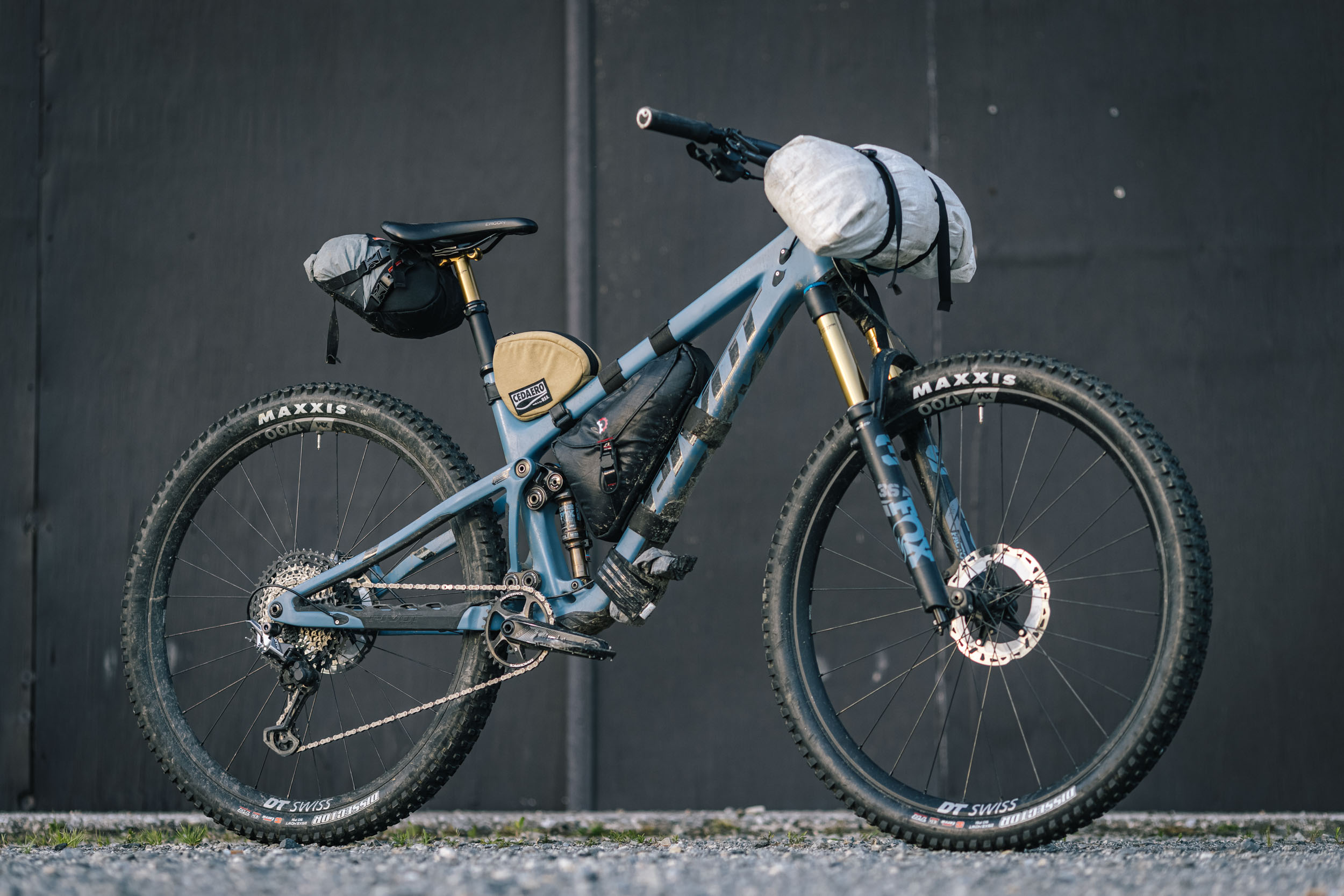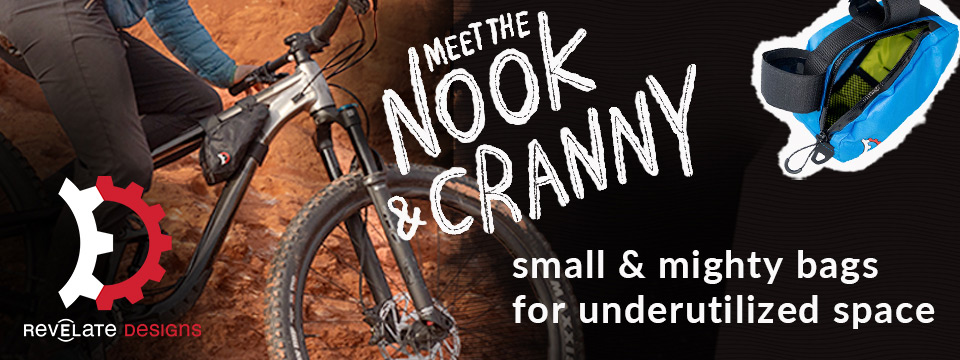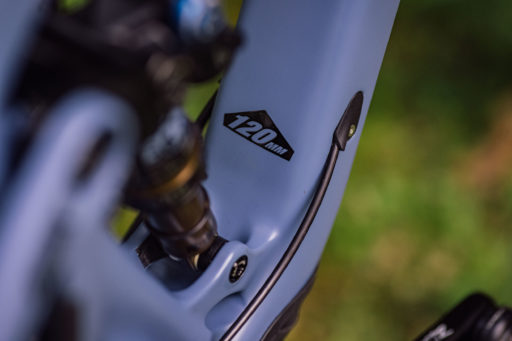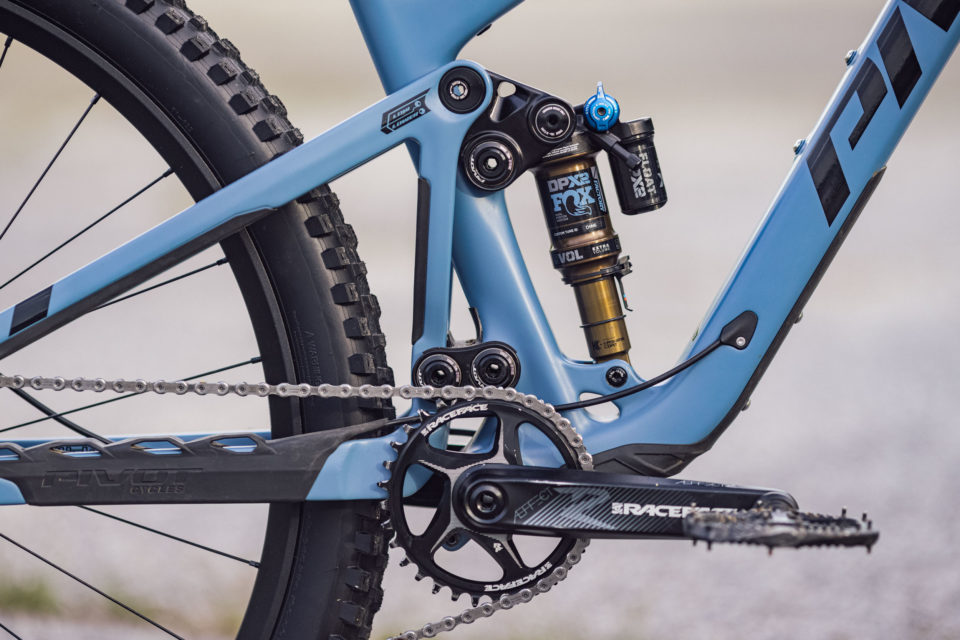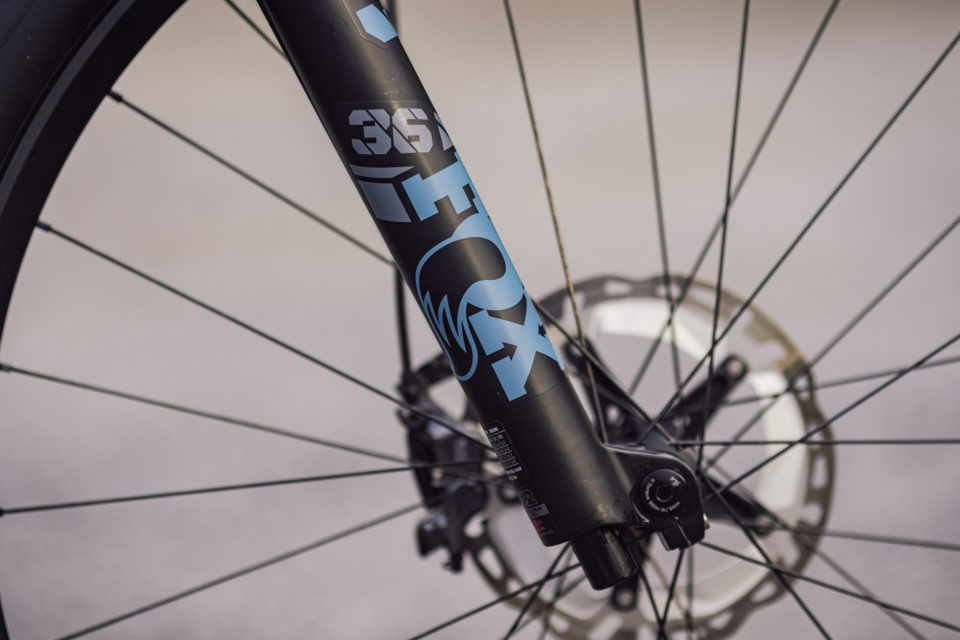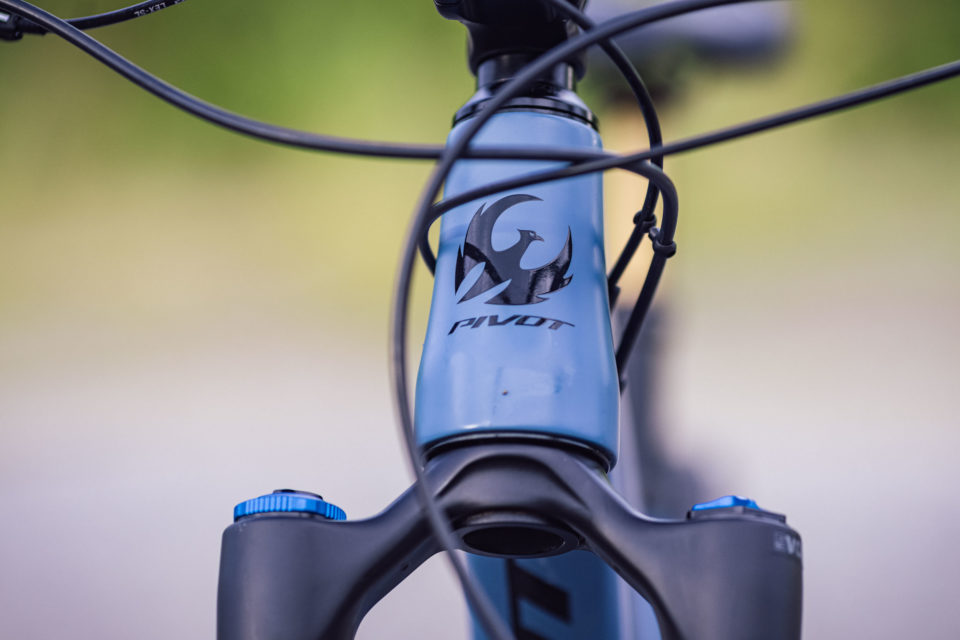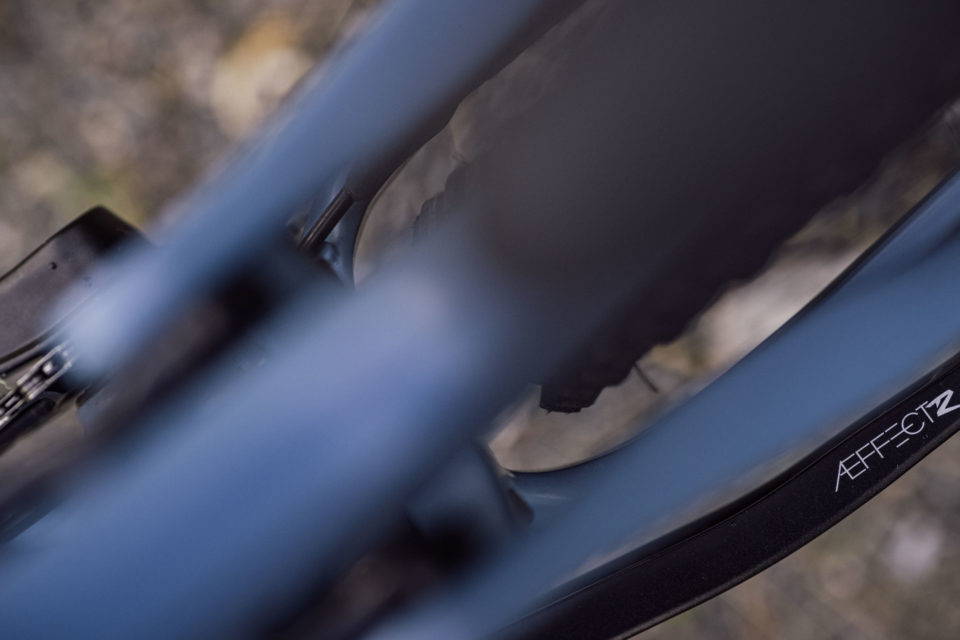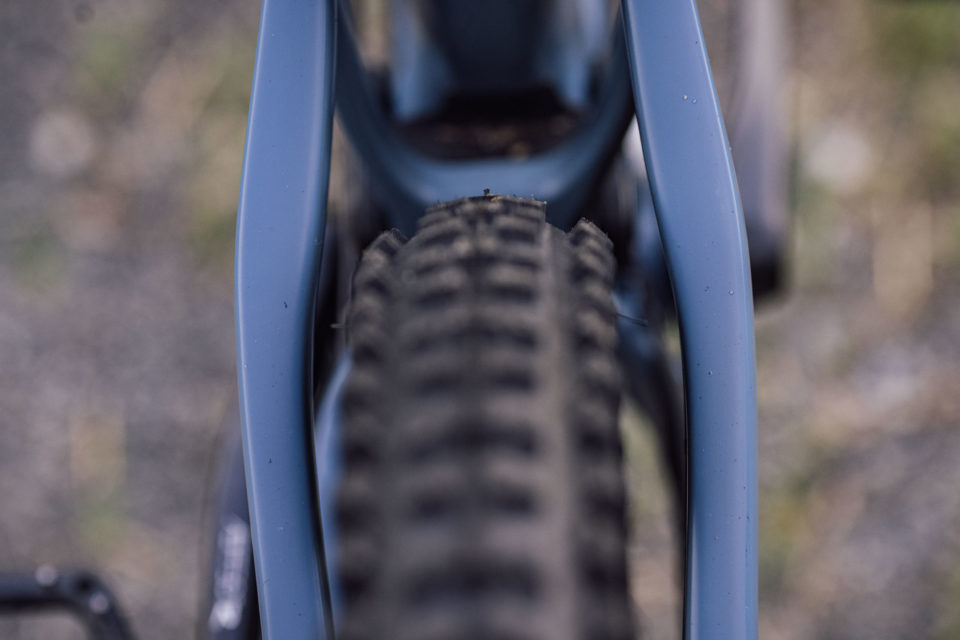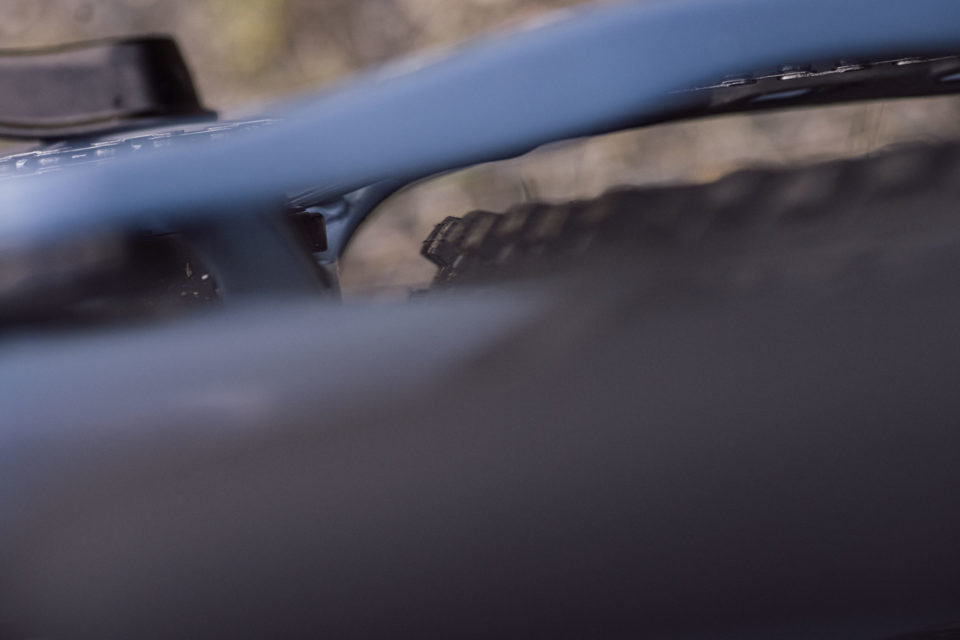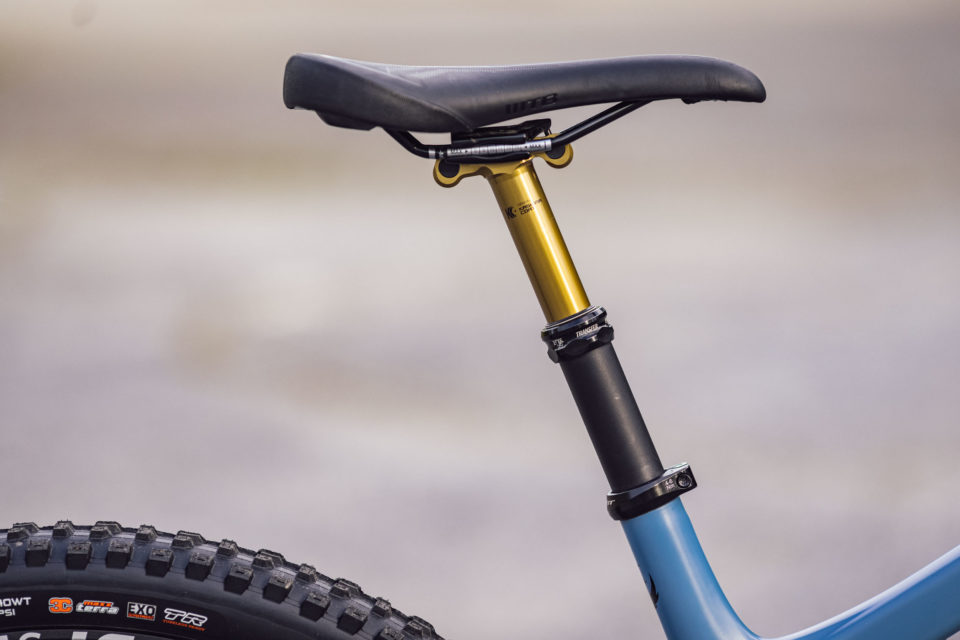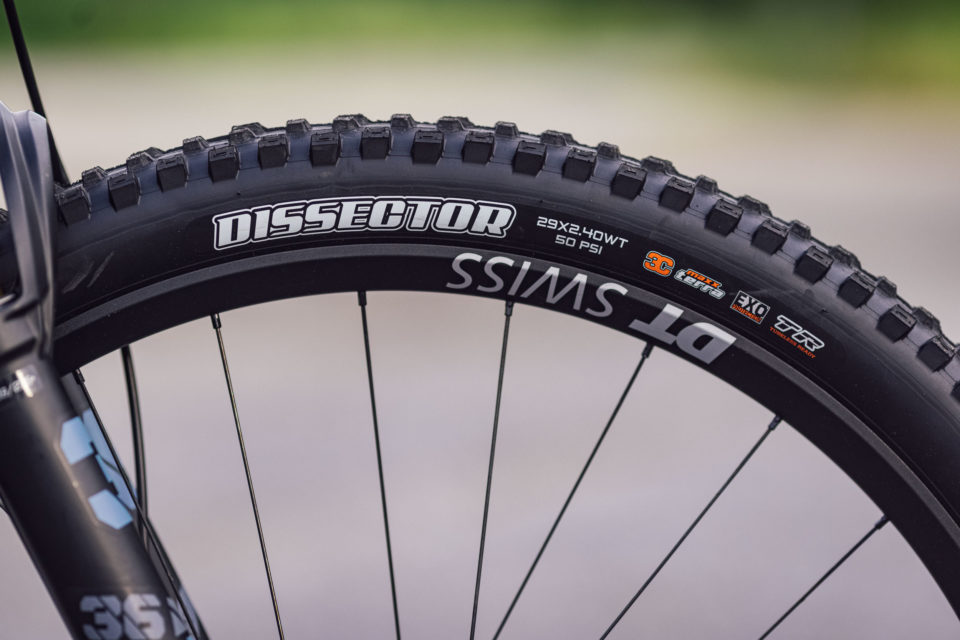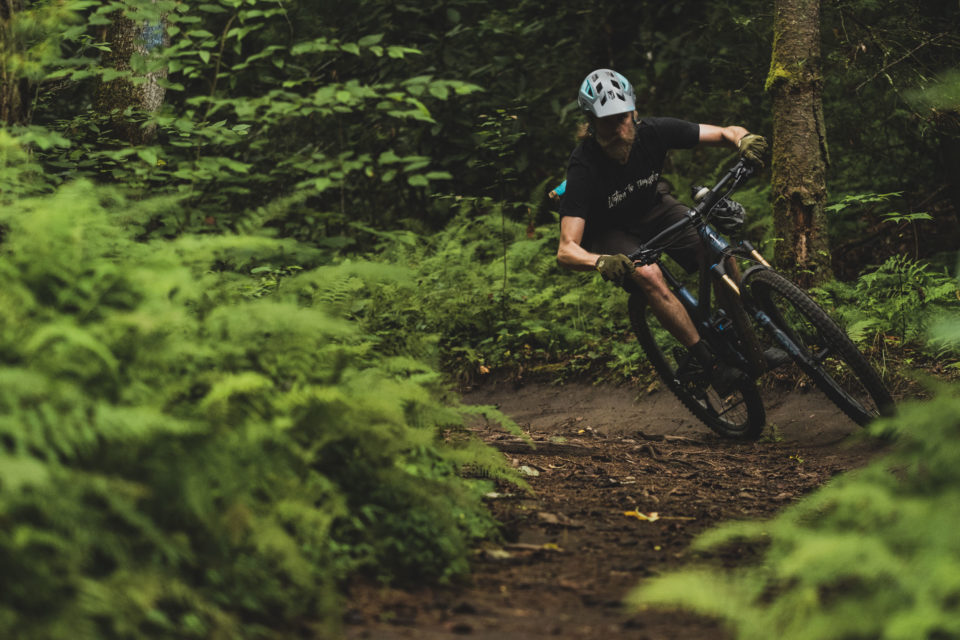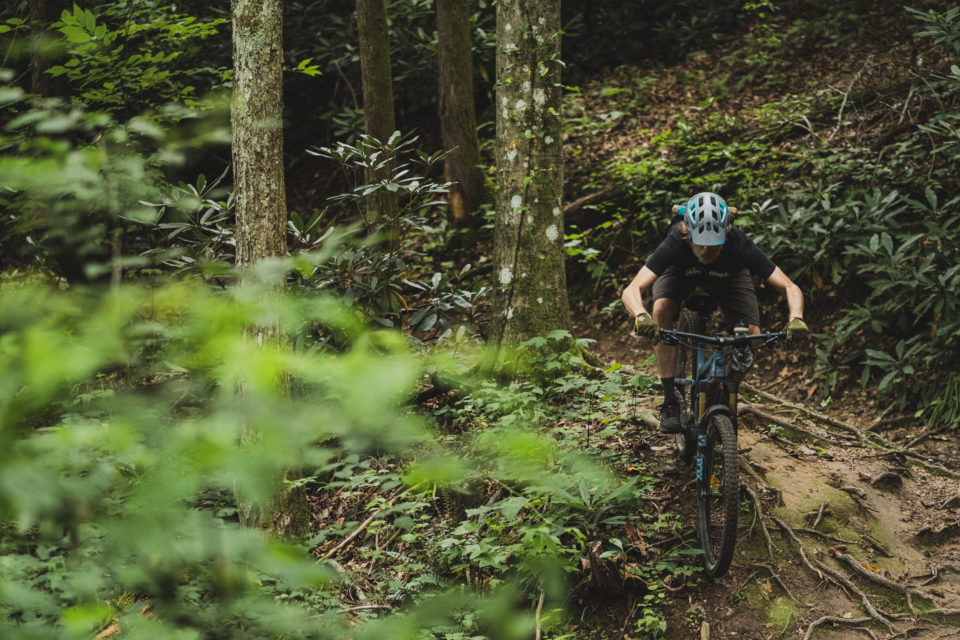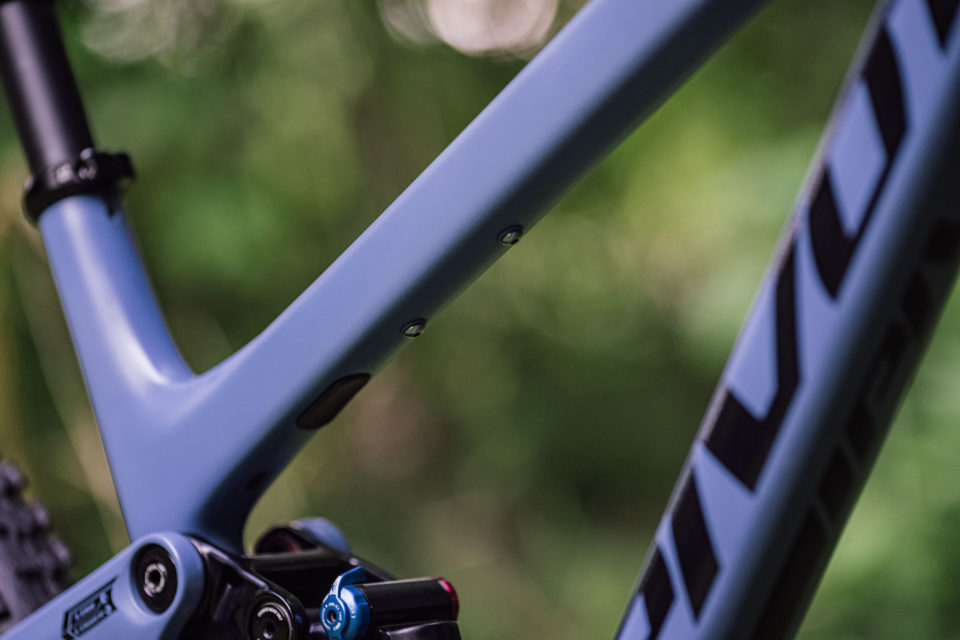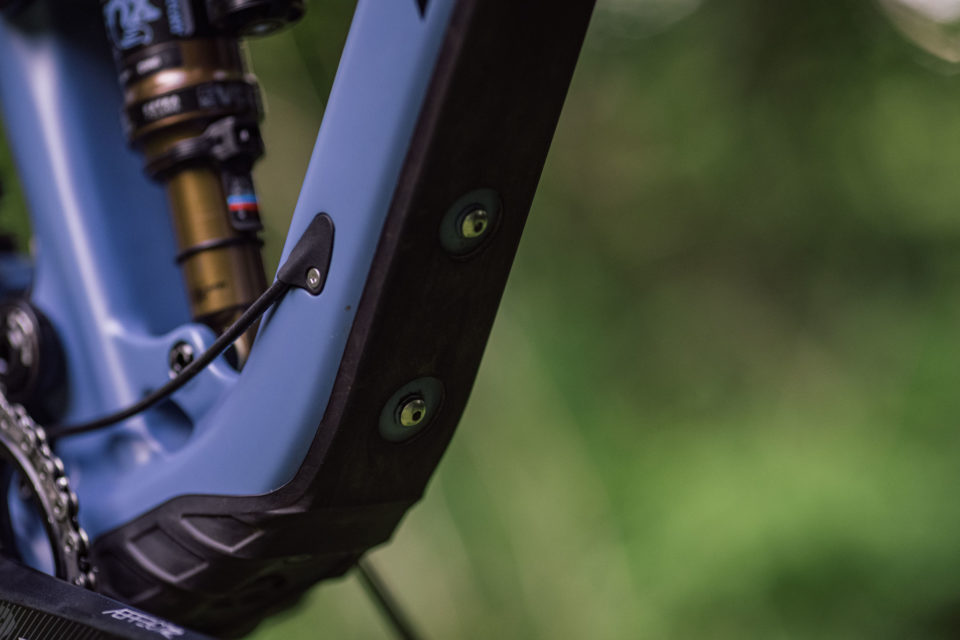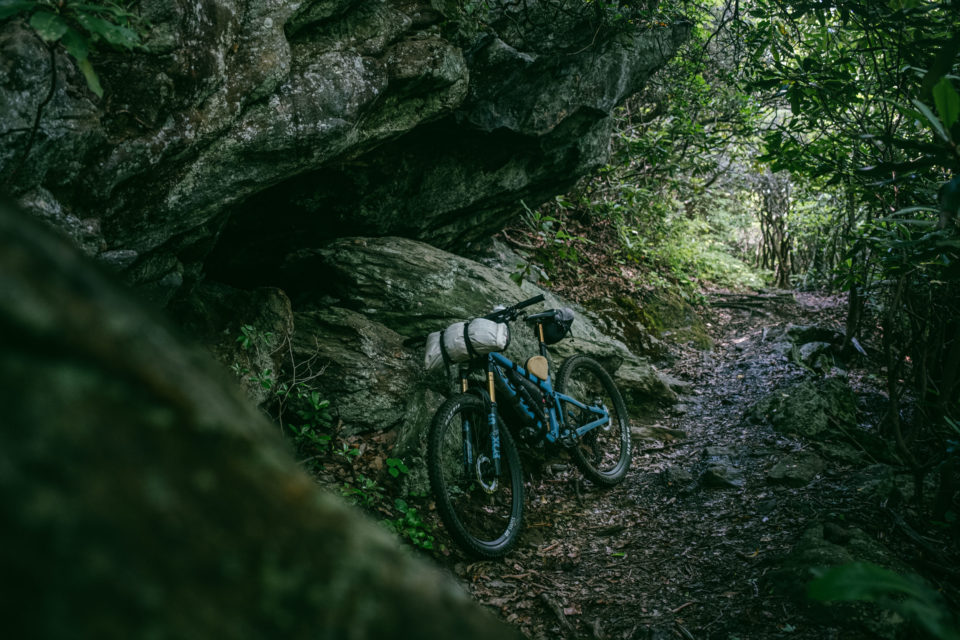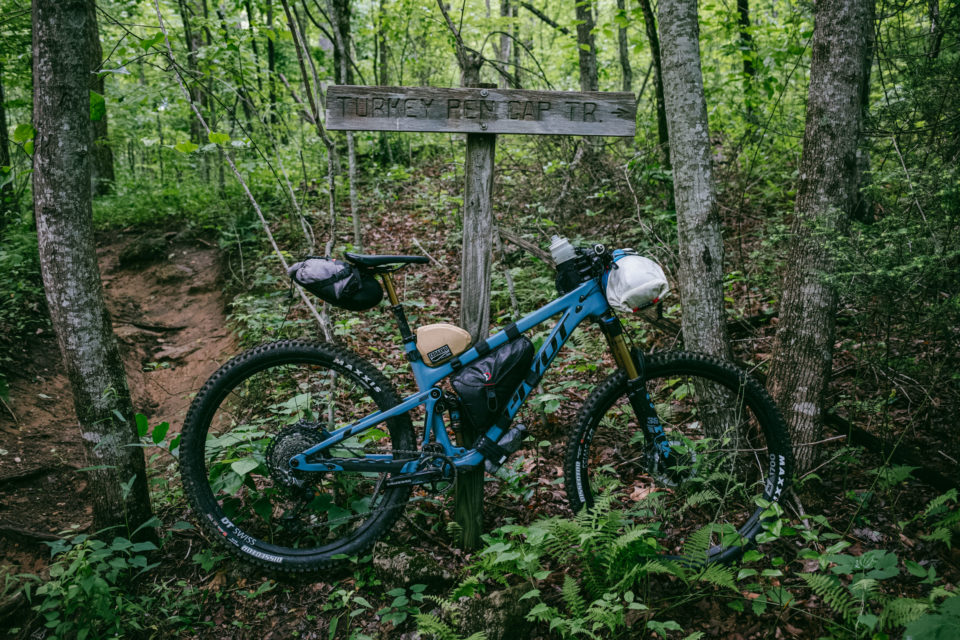Pivot Trail 429 Review
Share This
Earlier this year, Pivot Cycles updated their lauded Trail 429 with a revamped geometry, more mounts, and a different linkage design, aiming to make their multi-talented short-travel 29er even more versatile. We got a hold of one for several months of testing, including a spin on “The Real Pisgah” bikepacking route. Find our full review here…
While carbon squishy bikes aren’t for everyone, short-travel 29ers are a special breed, in my opinion. They’re not too over the top when compared to many of the beastly full-squish abominations these days, and unlike their big-travel siblings, short travel 29ers can’t barrel over anything at max velocity in a quest for downhill Strava crowns—which is a plus in my book. These bikes still require a little finesse to pick lines and make their way down technical sections. However, they can take the sting out of rugged trails, which has become a requisite for my aging body while trail riding around my chunky and bumpy home turf in Pisgah. Most short-travel 29ers also retain a high level of climbing efficiency, which is another plus for my style of riding. Lastly, they can be quite versatile, performing well on the trail, and sharing duties as a full-suspension bikepacking rig or a long-ride backcountry bike.
- Highlights (Size L)
- Angles (as setup): 65.5° Headtube, 74.5° Seattube
- Reach/Stack: 470/~618mm
- Bottom Bracket: Press-fit 92, 33mm drop
- Hub specs: 157 x 12mm (rear), 110 x 15mm (front)
- Seatpost Diameter: 31.6mm
- Max Tire Size: 29 x 2.6” or 27.5 x 2.8″
- Price: $7,499 (Pro XT/XTR Enduro)
Pedaling power transfer, a lightweight chassis, and a fatigue-reducing minimal suspension platform are what make bikes like this pegged for cross-country racing and endurance mountain biking. However, most bike companies are starting to expand their short travel 29er’s capabilities, recategorize them, and blur the lines of what they’re designed to be used for. That’s putting a lot of onus on bikes in this class. They’re expected to climb like an XC bike yet have almost as much descending prowess as an enduro rig. They’re supposed to handle gracefully while climbing at low speeds yet still be rock solid when going down. The Pivot Trail 429 was overhauled back in Feb with these goals in mind.
Formerly called the Mach 429, this bike has long been on my shortlist of short-travel 29ers. I was on the hunt for a unicorn in this versatile genre a couple of years ago and test rode quite a few options before settling on an Ibis Ripley to call my own. Since then, I’ve tried a few more—it’s always fun to see what’s out there, right? So, when I heard Pivot updated their classic flagship with the “modern trail bike treatment,” I thought I’d give it a shot. Ultimately, I managed to ride the Trail 429 for the majority of the summer and put several hundred miles on it while trail riding and bikepacking for this full review.
What’s Changed?
The Trail 429 has been a mainstay in the short-travel trail bike market for several years now, and it just so happens to be Pivot’s best-selling model. The new third-gen Pivot Trail 429 got several updates that are shared among Pivot’s other rigs: a vertically oriented rear shock, progressive suspension, a less curvy aesthetic, and the slacker-longer-lower treatment that’s turnkey on newly released mountain bikes these days. The Trail 429 is still built around 120mm of rear travel and a 130mm fork.
Considering that Pivot reduced the weight of the frame by about 300 grams this go-around (5.9 lb. frame weight with the shock), one might think that it would still have the soul of a cross-country bike. However, V3 saw a few engineering changes that add up to more aggressive riding, tweaks that are similar to what we’ve seen in other trail bikes recently: a longer reach, slacker headtube (66.5°), and steeper seat tube (75.5°) across the size range. Consistent with version 2, Pivot also retained the widened 157mm (Super Boost) rear end, like the bikes on the aggressive side of Pivot’s lineup. This beefed up the bike’s clearance to 29 x 2.6″ or 27.5 x 2.8″ tires (the older model stopped at 29 x 2.4″). Otherwise, the new Trail 429 is still based around DW-Link suspension on the frame, although the new vertical shock and linkage design has a more progressive leverage curve that Pivot claims adds capability on the aggressive side of the spectrum.
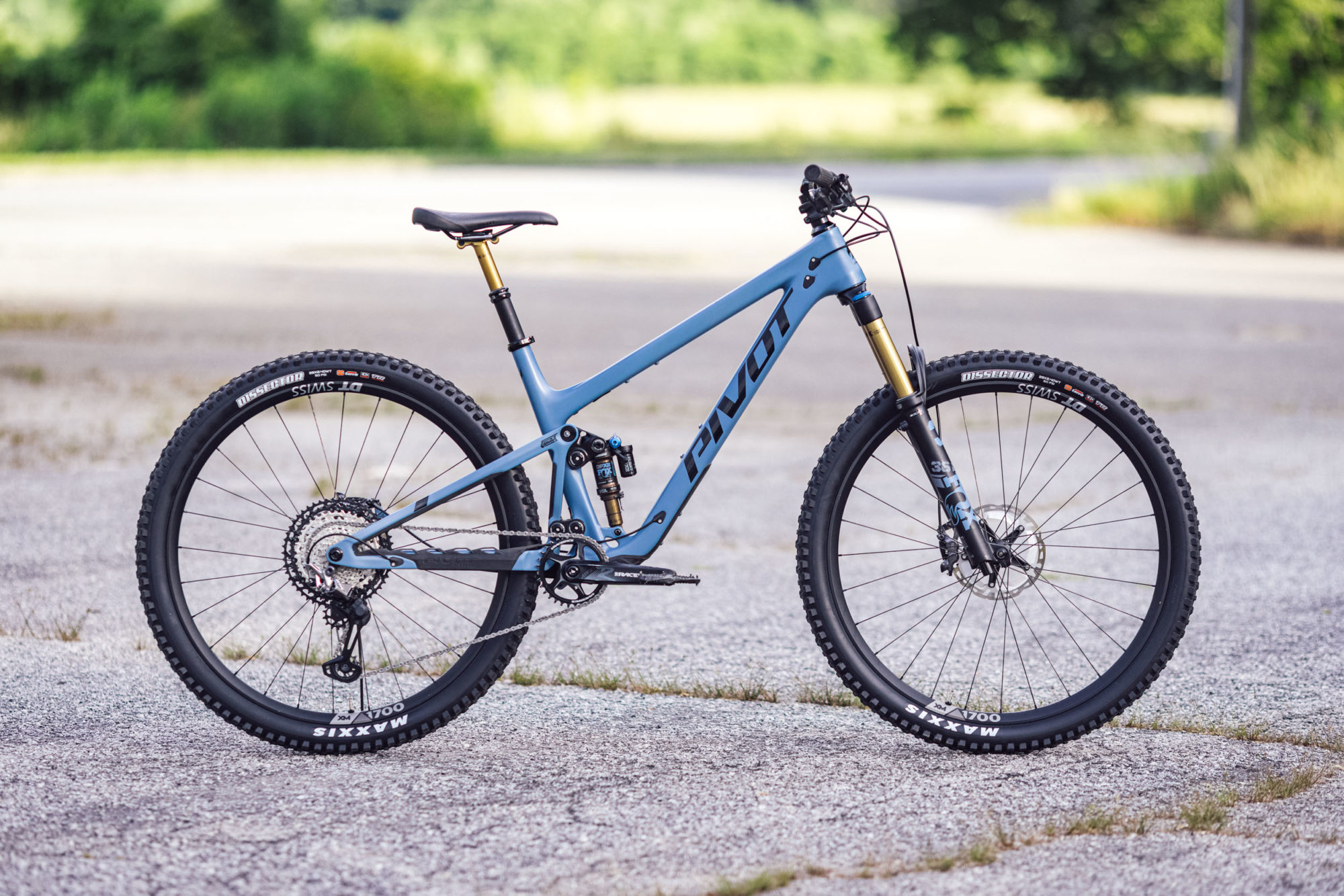
Pivot also introduced a flip chip in the upper rocker linkage, allowing you to adjust the bottom bracket height and tailor the geometry between what they call normal all-around handling (“Low”) or a more progressive feel (“Lower”), which basically drops the bottom bracket 6mm, slackens the headtube angle 0.5° (to 66°), and slackens the seat tube to 75°.
There were also a few other small changes to V3. Pivot added rubber downtube and chainstay protectors, as well as a few more bottle mounts, which I’ll cover in the bikepacking section below. The 2021 Pivot Trail 429 comes in Pacific Blue or Silver in sizes XS-XL. Completes are available with 20 builds that start at $5,900 and go all the way up to $13,200.
Pivot Trail 429 Build (Pro XT/XTR Enduro)
All the structural and cosmetic updates seemed okay to me on paper. There was nothing too excessive to take it out of the versatile and semi-efficient realm of the short-travel 29er. However, when I unboxed it, I realized they sent the Enduro build, which meant it was technically overforked with a 140mm fork that further slackens the head tube angle to 65.5°. It also had the heavier and stiffer Fox 36 fork instead of the lighter standard 34mm stanchion-equipped fork. My immediate preconceptions were that this would all add up to a slower and less efficient bike, one that was perhaps a little less climbing and bikepacking-friendly. It also meant it was probably going to be a little heavier. Here’s the full build kit for reference:
- Frame
- Shock Fox Factory Float DPX2
- Fork Fox Factory 36 29″, GRIP2 – 140mm
- Rims DT Swiss XM1700, 30mm, 29
- Front Hub DT Swiss 350 15×110
- Rear Hub DT Swiss 350 hub, 36t Star Ratchet, 12×157
- Tires Maxxis Dissector 29″ x 2.4″ WT, TR, 3C, EXO, MAXXTERRA
- Crankset Race Face Æffect R 32t
- Derailleur Shimano XTR M9100 SGS 12-Speed
- Shifter Shimano XT M8100 ISPEC EV 12-Speed
- Cassette Shimano XT M8100 10-51t
- Brakes Shimano XT M8120 4-piston
- Brake Rotors Shimano XT CenterLock, 180mm
- Chain Shimano CN-M8100 12-Speed
- Handlebar Phoenix Team Low Rise Carbon – 780mm
- Stem Phoenix Team Enduro/Trail
- Grips Phoenix Factory Lock-On
- Headset Pivot Precision Sealed Cartridge
- Saddle Phoenix WTB Volt Pro (Medium Width)
- Seatpost Fox Transfer Factory Series 175mm
Considering the lack of carbon wheels and quick-engagement hubs, $7,499 is nothing to blink at for this build. But it does have a few stand-out components, such as the game-changing (which I’ll get to) Fox 36 fork, Fox Transfer dropper post, XT/XTR drivetrain, and XT 4-piston brakes. It’s a super solid build that doesn’t really need any improvements, aside from maybe a 54-tooth ratchet upgrade in the DT350 hub.

On the Trail
Despite the heavy enduro build, I pressed on and left the flip chip in the “Lower” setting and ran it exactly as they sent it, aside from trading out the grips and saddle for my preferred Ergon options. On the first pedal out to one of my go-to singletrack loops, I could tell it was a little heavier than the 27-pound Ibis Ripley I’d been riding. The 429 Enduro build weighed 30.33 pounds (13.76 kilograms) on the scale without pedals. Even so, it didn’t feel sluggish. While the new suspension design is made to be supple off the top to get that small bump comfort (which it is), it’s also not overly active when pedaling, and much like my Ripley, it accelerates quickly and responds to bursts of pedaling input when needed.
I was kind of surprised at how similar it felt to the Ibis Ripley. Although they have different shock configurations, they’re both DW Link bikes, which might help explain that sensation. Looking at them by the numbers, they’re geometrically quite similar, too. One thing that stood out immediately was that the Pivot felt a little longer than the Ibis, despite not actually being longer. They’re both specced with a 475mm reach, and the Pivot’s is even shorter in the “Lower” setting (470). However, the Trail 429 does have a shorter stack height, which might explain why the cockpit felt a touch longer.
Another thing I noticed was that the bottom bracket was perceptibly higher than other bikes I’ve tried recently. In the “Lower” setting, it’s specced at 33mm, although it’s probably about 29 or 30 with the longer 140mm fork. That’s about 10 or 11mm higher than the 39.5mm Ibis or the 41mm Tallboy. On the plus side, I didn’t have to worry about pedal strikes as much. And while I don’t think this leads the Trail 429 to suffer on the downhills, I don’t think it’s quite as good of a climber as the Ripley. That might have a little to do with the higher BB and a little to do with the longer fork and slacker angles. Don’t get me wrong, it’s probably one of the best climbers in its class, and it would almost certainly be even better with a lighter 130mm Fox 34 fork, which would also steepen it a bit and lower the BB.
That being said, I can confidently profess that the Pivot Trail 429 descends better than any of the bikes I’ve tested in its class. Better than both my Ripley and the Tallboy. Part of this is due to the Enduro package, more specifically the 140mm Fox 36. I was extremely impressed with this fork during my test period. It’s noticeably stiffer and holds up throughout long descents and bigger hits. And of course, much of this has to do with the fact that it’s a bit slacker than those other bikes when in the “Lower” setting and with the longer fork. However, I also think that there’s something to be said about the impressive overall stiffness of the 429’s frame. It simply feels stout and sure when charging through more technical downhill sections, more so than other bikes in its class. This can partially be attributed to the beffier fork, and there’s probably a little credit due to the wider Super Boost rear end, but I also think Pivot did an excellent job of delivering a well-tuned carbon layup that seems to minimize deflection on chunky descents. The suspension also plays a role here. The mid-stroke on the rear end felt very sturdy and planted on rowdy descents. Pivot claims that it’s more progressive than other short-travel bikes, which makes the rear suspension more supple at the top, but as it compresses it becomes firmer and resists bottoming out or feeling harsh on bigger hits.
The same can be said for cornering. I was pleasantly surprised at how well the Trail 429 handled harsh high-speed corners with a nice blend of confidence and quickness. That same mid-stroke quality no doubt plays a role here. I’ll add that it’s specced with 2.4” Maxxis Dissectors on both the front and rear, a tire I’ve been wanting to try for a while now. I’m pretty impressed with its excellent mix of speed and cornering ability. However, on technical climbs in the Appalachians, particularly when it was damp, they’re no match for our greasy roots, and I often found myself spinning out. I would expect this tire to be ideal in desert conditions or rocky alpine terrain.
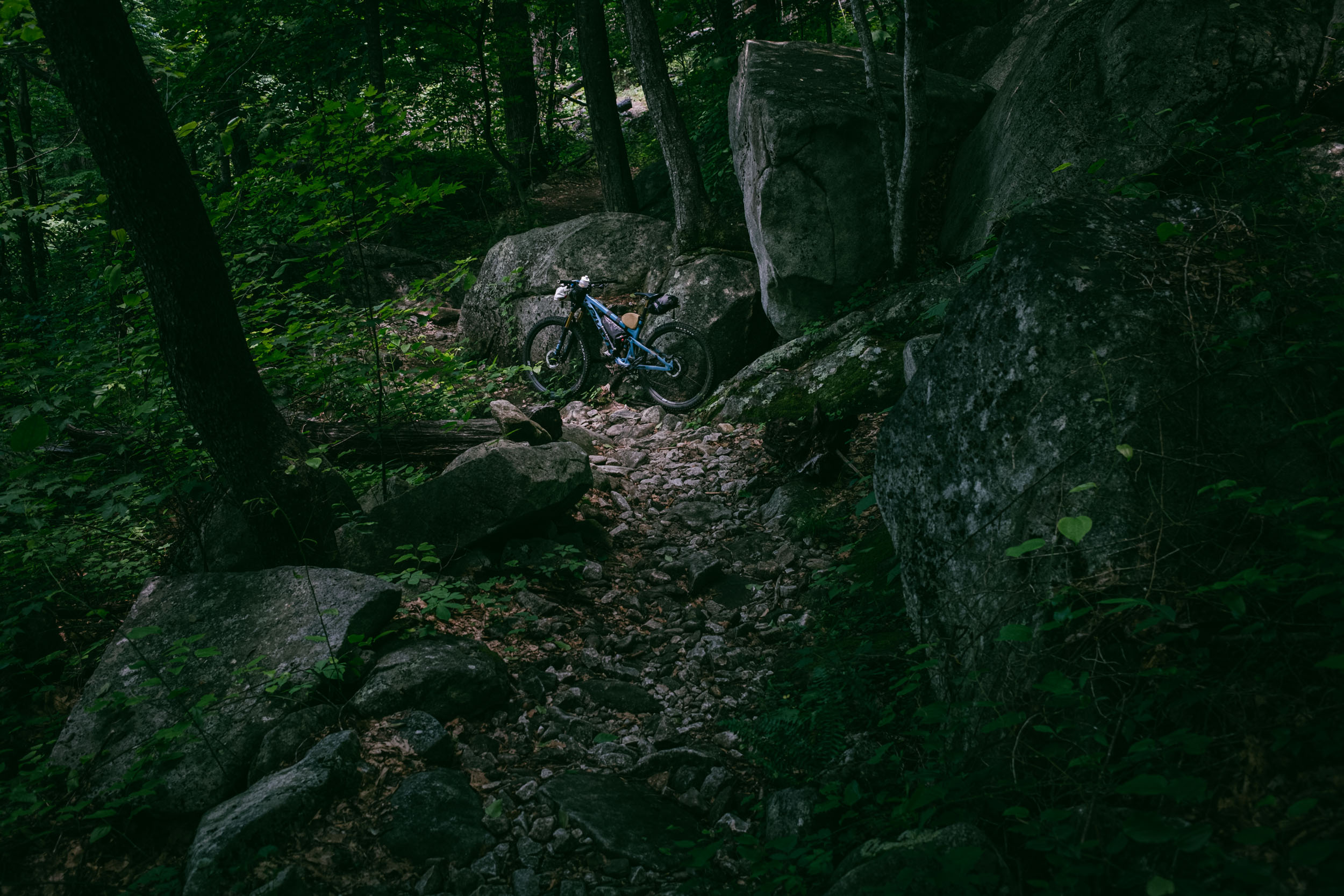
While Out Bikepacking
My list of requirements for bikes in this category also usually includes a few details that make it fit for multi-day bikepacking. For one, the saddle-to-tire clearance on a full-suspension bike is limited, so having a little extra frame triangle space is key. I can’t say that the Pivot gets top marks in that regard. The triangle is a little smaller now, as is the case with many modernized trail bike frames these days. Low standover and maximum dropper post capacity take precedence over frame triangle room with bike companies now. However, it’s too small to be useful. I used a Revelate Hopper in the triangle, which fit pretty well on the size large frame. The non-Enduro build would have provided some extra space since the reservoir on the Fox DPX2 takes up a little room.
The Trail 429 has a leg up on bosses, though. The V3 has a pair of water bottle mounts in the front triangle (on all sizes), and a second set under the downtube, which was one thing we loved about the former versions of this bike, and something many companies have done away with in recent trail bike iterations. It also has a third pair on the underside of the top tube, perfect for a custom bolt-on frame bag or accessory.

The big loaded ride where I tested the Trail 429 in bikepacking mode was an inaugural full pull on The Real Pisgah, a bikepacking route I dreamt up years ago. I’d already ridden most of the route in parts, many times over, but the last task was to get it out there and ride it in its entirety. The Trail 429 was a perfect fit for this 100-mile loop, a route is comprised of some of the more rugged and burly backcountry singletrack in the Pisgah Ranger District. I’ve historically ridden these trails on rigid 29+ bikes, hardtails, and short-travel 29ers, but most of the locals have bigger 140/160mm travel bikes. And there’s a pretty good reason for that. Many of those trails are old hiking and fall-line trails that exist within a rainforest. The combination of rain and wear makes for a lot of big roots and exposed rocks that add up to plenty of jarring technical sections made even more rugged by the length of the descents. Pretty much every trail around here involves a long climb and a big descent.
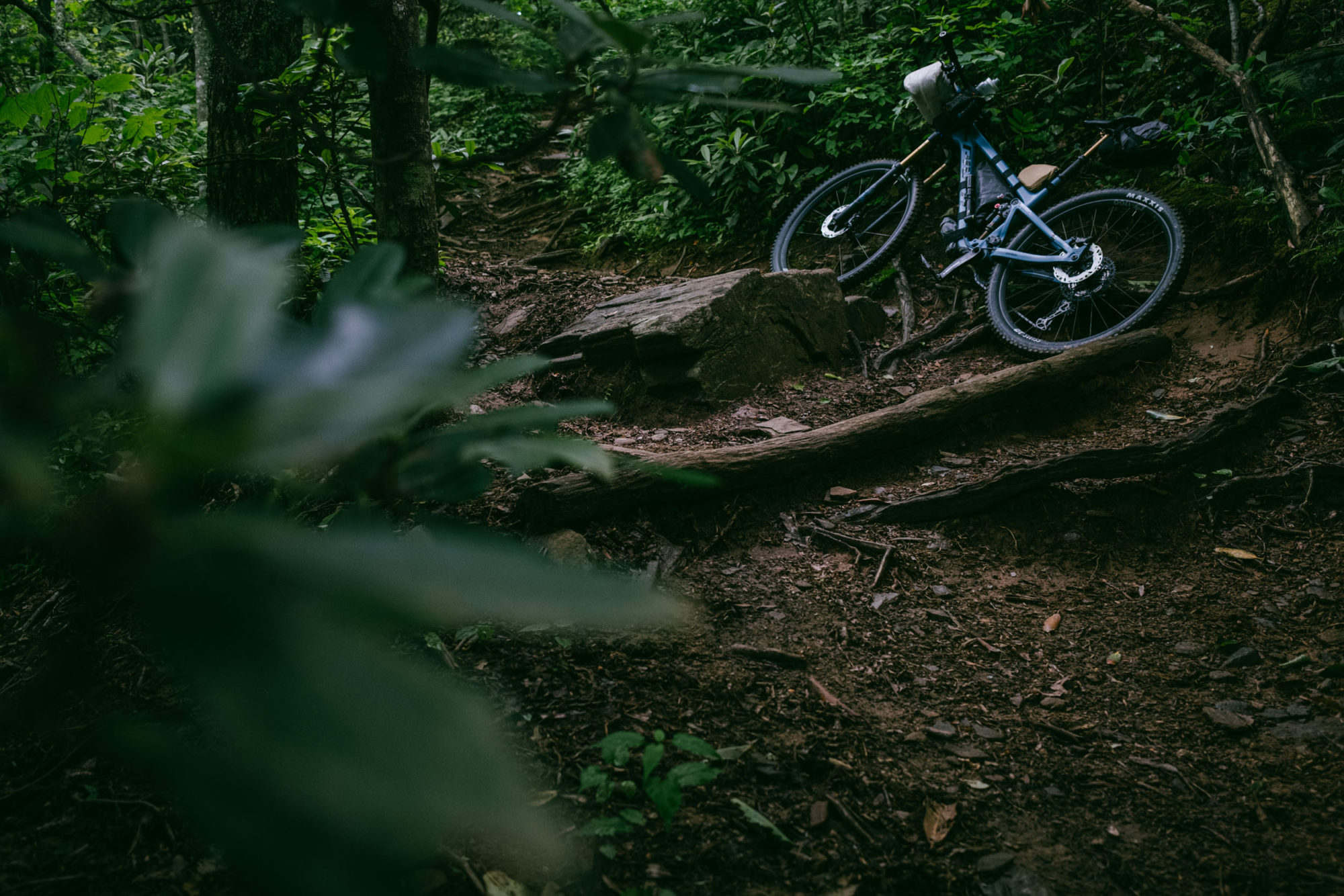
Once loaded up for the Real Pisgah, I added a little air in both the fork and shock to adjust them based on sag. Both the front and rear maintained maintained the solid performance I mentioned in the “On the Trail” section. The sturdy rear end was welcome with the extra weight and felt great both climbing and descending. And honestly, the Fox 36 was a game changer. I suppose I’ve gotten used to smaller stanchion forks over the years, but I realized that I’d probably spec this fork on a bikepacking-specific 29er if I were building one up from scratch right now. The added stiffness felt much more substantial and sure and made me second guess counting grams on a bike like this. Ultimately, all of the qualities about cornering and stability that I mentioned in the trail section of this review was amplified when the Trail 429 was loaded up.
- Model/Size Tested: Large, Pivot Trail 429 (Pro XT/XTR Enduro)
- Actual Weight: 30.33 pounds (13.76kg)
- Place of Manufacture: Taiwan
- Price: $7,499.00
- Manufacturer’s Details: pivotcycles.com
Pros
- Well-designed geometry that feels balanced and versatile (even with the longer fork in the “Lower” setting)
- Ability to tweak the geometry to your liking with the flip-chip
- Incredibly agile, predictable, and sure-footed while descending, particularly on twisty and fast corners
- Progressive suspension feels relatively supple while moving slow and doesn’t bottom out as much as other 120mm bikes I’ve ridden
- Decent frame triangle and plenty of bottle mounts
Cons
- Internal cables were rattly and loud
- Having a 34” inseam, I wish there was a little less standover and a larger triangle
- Superboost is good in theory, but now that Boost has seemingly won the standards battle, it’s not ideal for swapping out wheels
- Expensive
Wrap Up
After writing all of this, I realized I failed to mention one of the main reasons why I decided to pursue the new Pivot Trail 429 for a review in the first place. In a nutshell, my ears perked up when a friend and shop owner praised this bike on Instagram shortly after it was released—something about it being far superior to the previous model, which was already well-regarded.
Ultimately, I’m happy I tried it. It’s a solid bike all around, and one that I had a hard time finding any flaws with, aside from the rattly internal cable housing, and the fact that it’s pretty expensive. It undoubtedly punches above its weight with the Enduro package and still is a proficient climber, although it’s easy to envision that it would be even more capable going uphill with a slightly shorter and lighter fork. What really stood out about the Trail 429 is how solid and agile it is on rough descents and corners. It legitimately felt like a “bigger” bike than others I’ve ridden in its class while still maintaining quick handling and a snappy feel, even when loaded up for a multi-day trip.
Please keep the conversation civil, constructive, and inclusive, or your comment will be removed.






